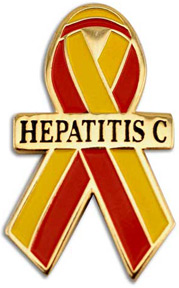
Excessive antibiotics put health at risk
By Carol Aloysius
In recent years an increasing use of antibiotics by the public
in general has raised serious concerns over grave health risks this
dangerous practice could pose. Health officials are disturbed that the
tendency for people to use antibiotics for even the most trivial ailment
such as a minor cold or cough which could easily be cured by plenty of
warm liquids such as tea and coriander with a slice of lemon, or ginger
and a bit of honey, a well tried recipe for such ailments in our
country. They have warned that taking strong medicinal drugs to ward of
an infection or mild fever especially without advice from a medical
practitioner, could not have diminish the beneficial effects of killing
bacteria, but worse still it could make them antibiotic resistant.
 Cases of antibiotic resistance have escalated in recent
years prompting health authorities to raise more awareness among the
public on the use of antibiotics and the danger of overuse. They have
also warned pharmacists to refrain from handing antibiotics to patients
over the counter and to insist on a doctor’s prescription. Health
authorities are also urging family physicians and doctors manning OPD
clinics to minimise prescribing antibiotics unless absolutely necessary.
The Sunday Observer recently spoke to the Consultant Microbiologist,
Sri Jayawardenapura Hospital, Dr Kushlani Jayatilleke for her views on
the subject and the role of microbiologists in identifying infections
that require antibiotics. Cases of antibiotic resistance have escalated in recent
years prompting health authorities to raise more awareness among the
public on the use of antibiotics and the danger of overuse. They have
also warned pharmacists to refrain from handing antibiotics to patients
over the counter and to insist on a doctor’s prescription. Health
authorities are also urging family physicians and doctors manning OPD
clinics to minimise prescribing antibiotics unless absolutely necessary.
The Sunday Observer recently spoke to the Consultant Microbiologist,
Sri Jayawardenapura Hospital, Dr Kushlani Jayatilleke for her views on
the subject and the role of microbiologists in identifying infections
that require antibiotics.
Excerpts…
Q. Although antibiotics have been around for several years,
not many people know what an antibiotic is. So tell us, what
are antibiotics?
A. An antibiotic is an agent that either kills or inhibits
the growth of bacteria in high dilution.
Q. Are they used against any micro-organism?
A. Antibiotics are only effective against bacteria and some protozoa but
they are not effective in treating infections caused by viruses or
fungi.
Q. When were they first introduced. Tell us something
about their history.
A. The first sulphonamide and first commercially
available antibacterial, Prontosil, was developed by a research team
led by Gerhard Domagk in 1932 at the Bayer Laboratories of the IG Farben
conglomerate in Germany.
The effects of some types of mould on infection had been noticed many
times over the course of history. In 1928 Alexander Fleming noticed the
same effect in a petri dish where a number of disease-causing bacteria
were killed by a fungus of the genus Penicillium.
Fleming postulated that the effect is mediated by an antibacterial
compound he named penicillin, and that its antibacterial properties
could be exploited for chemotherapy.
Florey and Chain succeeded in purifying the first penicillin,
penicillin G, in 1942, but it did not become widely available outside
the Allied military before 1945. Antibiotics and similar drugs, together
called antimicrobial agents, have been used for the past 70 years to
treat patients who have infectious diseases. Since the 1940s, these
drugs have greatly reduced illness and death from infectious diseases.
Q. What are the benefits of using antibiotics?
A. Antibiotic use has been beneficial and, when prescribed
and taken correctly, their value in patient care is enormous.
The incidence of severe sepsis (serious infections) in the
European Union has been estimated at 90.4 cases per 100,000
population, as opposed to 58 per 100,000 for breast cancer. Worldwide
1.8 million cases of severe infections are reported annually, but
this is probably more, as some are not reported. These patients
with severe infections will invariably die if correct antibiotics
were not administered early.
Q. What are the negative aspects?
A. There are several negative aspects to use of antibiotics.
The first problem is side effects and adverse reactions to antibiotics.
None of the drugs that we use are free of side effects or adverse
reactions. As you may know penicillin can cause serious allergic
reactions such as anaphylaxis leading even to death. Some other
antibiotics can affect the kidneys and patients can go into kidney
failure.
They may also affect the hearing and balance. Some others can affect
the liver and some can affect the bone marrow leading to low blood
cell counts. Most patients feel nausea (feeling sick), loss of appetite
and loose stools due to antibiotics.
These side effects may lead to death, especially diarrhoea
(antibiotic associated colitis).Uses of antibiotics have led to the
infectious organisms the antibiotics are designed to kill getting
adapted to them, making the drugs less effective. Many fungi, viruses,
and parasites have done the same. Some micro-organisms may develop
resistance to a single antimicrobial agent (or related class of agent),
while others develop resistance to several antimicrobial agents or
classes.
These organisms are often referred to as multidrug-resistant or MDR
strains. In some cases, the micro-organisms have become so
resistant that no available antibiotics are effective against them.
Q. Is drug resistance one of these negative factors?
A. Antimicrobial drug resistance occurs everywhere in the
world. Hospitals and other healthcare settings are
battling drug-resistant organisms that spread inside these institutions.
 Drug-resistant infections also spread in the community at large.
Examples include drug-resistant pneumonias, sexually transmitted
diseases (STDs), and skin and soft tissue infections. Drug-resistant infections also spread in the community at large.
Examples include drug-resistant pneumonias, sexually transmitted
diseases (STDs), and skin and soft tissue infections.
People infected with drug-resistant organisms are more likely to have
longer and more expensive hospital stays, and may be more likely to die
as a result of the infection.
When the drug of choice for treating their infection doesn’t work,
they require treatment with second - or third-choice drugs that may be
less effective, more toxic, and more expensive.
Trends in drug resistance
• Reports of methicillin-resistant Staphylococcus aureus
(MRSA) - a potentially dangerous type of staph bacteria that
is resistant to certain antibiotics and may cause skin and
other infections - in persons with no links to healthcare systems
these infections have been observed with increasing frequency.
If this organism get into blood the patients can get
serious complications such as endocarditis (infection of the
heart valves), endophthalmitis (infections of the deep layers of the eye
- this is very difficult to treat - may need to remove the eye) and
brain abscesses.
• Multi-drug resistant Klebsiella species and Escherichia coli have
been isolated in hospitals in Sri Lanka. They can cause urinary tract
infections, blood stream infections and other infections.
• Multi-drug resistant Acinetobacter species are also prevalent in
most of the hospitals in Sri Lanka and can cause respiratory tract
infections and other infections especially in intensive care units.
•Antibiotic-resistant Streptococcus pneumoniae infections have also
been reported. This is a bacterium which can cause meningitis, pneumonia
and many other serious infections.
•Antimicrobial resistance is emerging among some fungi, particularly
those fungi that cause infections in transplant patients with weakened
immune systems.
•The agricultural use of antibiotics in food-producing animals also
contributes to the emergence, persistence, and spread of resistant
bacteria. Resistant bacteria may be transmitted to humans through the
food we eat.
•Antimicrobial resistance has also been noted with some of the drugs
used to treat human immunodeficiency virus (HIV) infections and
influenza.
•The development of antimicrobial resistance to the drugs used to
treat malaria infections has been a continuing problem in many parts of
the world for decades.
Antimicrobial resistance has developed in a variety of other
parasites that cause infections.
In Sri Lanka the antibiotic resistance is reported from different
areas. In a surveillance study carried out by the Sri Lanka College of
Microbiologists in several hospitals in 2009, 63 percent of the
Escherichia coli isolated from blood of patients were resistant to
cefotaxime, an antibiotic which is used to treat severe infections with
this bacterium.
This means that if these patients were treated with this
antibiotic there was very high chance of not responding to treatment and
may even die of this infection.
According to another surveillance carried out on
Streptococcus pneumonia isolates from severe infections such as
meningitis (brain fever) and pneumonia (infections of the lung) nearly
50 percent were resistant to cefotaxime, the drug that is recommended
for these infections.
Adding to this alarming situation, another important factor
was revealed from a recently concluded study.
In a surveillance carried out in farm animals bacteria isolated from
the broiler chicken had high degree of antibiotic resistance.
This is another source of antibiotic resistance bacteria which can
come to humans through food chain.
Q. Why is antimicrobial resistance (AMR) a global concern?
A. The world’s premier health organisation, the World Health
Organisation summarises the danger of AMR thus:
A. AMR kills
B. AMR hampers the control of infectious diseases
C.AMR threatens a return to the pre-antibiotic era
D.AMR increases the costs of health care
E.AMR jeopardises health-care gains to society
F.AMR threatens health security, and damages trade and economies
Q. How can we stop this? What are the most appropriate
interventions?
* We have to stop inappropriate use of antimicrobial medicines,
including in animal husbandry.
* Do not request antibiotics from doctors or buy antibiotics over the
counter without consulting a qualified doctor.
*Practice good hygienic practices, such as hand hygiene, especially
when working, getting treatment or visiting healthcare institutions
(hospitals).
No danger from magnetic fields in electric cars
Many people are concerned that electric cars produce dangerous
magnetic fields. New research shows that this is not the case.
Researchers from seven countries have concluded that we can feel safe
both in electric-powered cars and in those powered by hydrogen, petrol
and diesel. None of them exposes passengers to higher electromagnetic
fields than those recommended in international standards. In fact, field
intensity is well below the recommended value. The study is currently
the most comprehensive ever carried out in this field.
 SINTEF has led and participated in the research project, involving
nine other European companies and research institutes. SINTEF has led and participated in the research project, involving
nine other European companies and research institutes.
“There is a good deal of public concern about exposure to magnetic
fields. The subject crops up regularly in the media. With the number of
electric-powered vehicles increasing, this project is very relevant,”
says Kari Schjølberg-Henriksen, a physicist at SINTEF.
In addition to improving the public's confidence when it comes to
magnetic fields in electric cars, the goal of this project was primarily
to create a standardised method for measuring electromagnetic fields in
such vehicles. The International Commission on Non-Ionising Radiation
Protection (ICNIRP) defines the limiting values of acceptable exposure
to magnetic fields at different frequencies.
Eleven types
The intensity of magnetic fields in seven different electric cars,
one hydrogen car and one petrol car were measured to ascertain whether
they approach the recommended limiting values for human exposure. The
measurements were carried out using real cars in a laboratory and during
road tests.The highest values in electric cars were measured near the
floor, close to the battery itself and when starting the cars. In all
cases, exposure to magnetic fields is lower than 20 percent of the
limiting value recommended by the ICNIRP. Measurements taken at
head-height are less than two percent of the same limiting value.
In the case of petrol and diesel powered cars, exposure was measured
at around 10 percent of the limiting value. In other words, there is
little difference between electric cars and petrol and diesel cars.
Limiting value
Hence the conclusion is that magnetic fields in electric cars are
well below the limiting values, and that there is a good safety margin.
“There is absolutely no cause for concern.
The difference between this research and similar earlier work is that
we have taken into account what contributes to the magnetic fields.
The rotation of the wheels themselves generates considerable magnetic
fields, irrespective of vehicle type,” Schjølberg-Henriksen points out.
The EU-funded research project EM Safety is the most comprehensive study
yet carried out to identify different sources of magnetic fields in
electric cars.
Seven countries have been involved in the project, in which
universities, the car industry, research institutions and laboratories
are represented.
MNT
The end of hepatitis C?
A new report published in the Journal of Viral Hepatitis has shown
for the first time that the elimination of hepatitis C could now be
possible, if testing and treatment rates are increased.
 Using new modelling techniques, clinicians responsible for the
treatment of hepatitis C, statisticians and epidemiologists across 15
countries investigated how increasing treatment success and the number
of patients treated per year could lead to a 90 percent reduction in the
total infected population by 2030 - the clinical definition of disease
elimination. The research was supported by an educational grant from
Gilead Sciences. “This is the first analysis of its kind to establish
how country health services and governments can work to eliminate a
disease, within a predictable time frame”, commented Prof Graham Foster. Using new modelling techniques, clinicians responsible for the
treatment of hepatitis C, statisticians and epidemiologists across 15
countries investigated how increasing treatment success and the number
of patients treated per year could lead to a 90 percent reduction in the
total infected population by 2030 - the clinical definition of disease
elimination. The research was supported by an educational grant from
Gilead Sciences. “This is the first analysis of its kind to establish
how country health services and governments can work to eliminate a
disease, within a predictable time frame”, commented Prof Graham Foster.
“Hepatitis C is a curable disease, but today, only three percent of
people infected with the virus currently achieve cure.
The research shows that treating only 10 percent of the diagnosed
population per year, would ultimately lead to disease elimination by
2030. At lower rates, new infections would keep prevalence higher.”
Each contributing country has determined their own local strategy to
achieve the elimination of hepatitis C. Across the 15 countries,
research concluded that if newer, more effective medicines are
implemented but today's treatment rates remain the same, only moderate
decreases in hepatitis C-related illness and death would be seen.
However, by taking a two pronged approach of improving treatment
efficacy and increasing annual treatment rates from the current average
of 2.2 percent to 10 percent, elimination of hepatitis C is achievable.
Hepatitis C is a global public health issue and is estimated to
affect around nine million people across Europe. People infected with
hepatitis C may not experience any symptoms for 20-30 years but by the
time patients are symptomatic, the virus may have led to the development
of severe complications including cirrhosis and liver failure.
Hepatitis C is the leading cause of liver transplantation in the EU,
with 62 percent of all end stage liver disease costs associated with
transplants.
In Europe the total medical cost to treat the complications of
hepatitis C (hepatocellular carcinoma, liver transplant and cirrhosis)
per person per year is €13,690, €118,162 and €12,196 respectively.
“Hepatitis C prevalence in the majority of European countries has now
peaked.
The number of new infections remains stable due to the success of
some initiatives to reduce the risk of transmission (e.g. blood
screening and needle exchange programs).
However, the ticking time bomb for governments and health systems is
that the observed complications from hepatitis C infection are
increasing as the population ages.
These complications are what will have the greatest cost impact and
so timely identification and treatment ofhepatitis C is paramount to
reduce the future costs to the health system and burden on the patient,”
said Prof Graham Foster.
- MNT
|

